What is the best Polenta substitute?
When it comes to finding the best substitute for polenta, there are a few fantastic options for you to consider. If you’re looking for a grain-based alternative, consider using cornmeal. It shares a similar corny flavor and can be prepared in a creamy consistency akin to polenta. Or, for a low-carb alternative, mashed pumpkin or cauliflower mash can work well, offering a lighter and healthier twist. Experiment with these substitutes and discover the perfect polenta replacement for your dishes
Try using: Cornmeal, Mashed Potatoes, Cauliflower Mash, Rice, Creamy Buckwheat, Millet Porridge, Sweet Mashed Potatoes, Mashed Pumpkin or Creamed Spinach.
Remember, the choice of substitute depends on the specific dish you’re preparing and the flavors you want to achieve.
What is Polenta?
Polenta is a versatile Italian dish made from coarsely ground yellow corn, often referred to as cornmeal. It has a creamy and slightly grainy texture. To prepare polenta, you typically combine cornmeal with water or broth and cook it until it thickens. You can serve it soft and creamy, similar to mashed potatoes, or you can allow it to cool and solidify, then slice and grill or pan-fry. Polenta serves as a great base for various toppings, such as sautéed mushrooms, tomato sauce, or cheese. Its mild, corny flavor makes it an excellent canvas for a wide range of flavors, and it’s a favorite in both Italian and international cuisine.
Okay, before we look at your polenta substitute options, let’s deal with that empty cupboard situation!
Where can I buy Polenta?
If you want to be more prepared and ensure you don’t run out of polenta, then you should stock up now.
Nowadays, most delicatessens and general supermarkets stock a wide variety of polenta. Or if you prefer you can also purchase polenta on-line.
So why not jump on and place your order today.
STOCK UP NOW!
Authentic Italian Polenta. This quick cook polenta is ready in 5 minutes. Grill or bake and only 130 calories per serving.
100% gluten-free.
What can I substitute for Polenta?
Here are some of the best ingredients to substitute the flavor and role that mozzarella cheese provides in your recipes.
- Cornmeal
- Mashed Potatoes
- Cauliflower Mash
- Rice
- Creamy Buckwheat
- Millet Porridge
- Sweet Mashed Potatoes
- Mashed Pumpkin
- Creamed Spinach
Cornmeal
Cornmeal is a type of flour made from dried and ground corn (maize). It comes in various textures, from fine to coarse, and is a staple ingredient in many cuisines, especially in the Americas and parts of Europe. Now, if you want to use cornmeal as a substitute for polenta in your recipes, here’s how you can do it:
- Cooking Method: To mimic the creamy consistency of polenta, you can use cornmeal in the same way you would prepare polenta. Combine it with water or broth in a pot and cook it while stirring constantly until it thickens. The ratio of liquid to cornmeal may vary, so follow a recipe or adjust as needed.
- Flavoring: Just like with polenta, you can enhance the flavor of cornmeal with various ingredients. Add butter, cheese, herbs, garlic, or other seasonings to taste. This will give your cornmeal a delicious and personalized flavor profile.
- Toppings: Cornmeal can be a versatile base for various toppings. Try it with sautéed mushrooms, roasted vegetables, tomato sauce, or a protein of your choice. You can create both savory and sweet dishes with cornmeal.
- Baking: If you’re looking for a different texture, you can use cornmeal in baking. Incorporate it into cornbread, corn muffins, or other baked goods to add a unique corn flavor and a slightly grainy texture.
- Cooling and Slicing: Similar to polenta, you can spread cooked cornmeal on a tray, allow it to cool and solidify, and then slice it into shapes. Then you can grill, bake, or pan-fry the slices to create a firmer texture, similar to polenta cakes.
- Polenta-Style Dishes: You can adapt many polenta recipes to use cornmeal instead. For instance, make a cornmeal porridge and serve it with a ragu or as a side dish in place of traditional soft polenta.
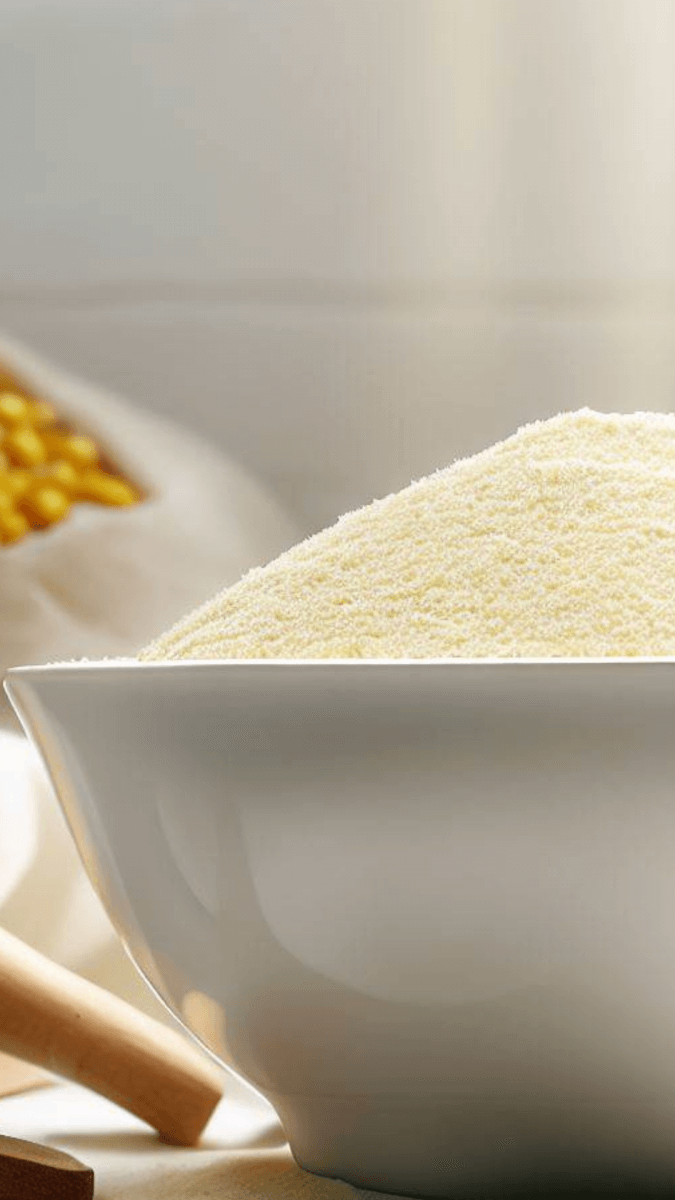
Mashed Potatoes
Mashed potatoes are a beloved dish made from boiled and mashed potatoes which is then enriched with butter, cream, or milk, and seasoned to taste. They have a creamy, smooth texture and a mild, buttery flavor. You can use mashed potatoes as a substitute for polenta in various ways.
Here’s how you can use mashed potatoes as a substitute for polenta:
- Texture and Flavor: Mashed potatoes have a creamy texture, making them a great alternative for soft polenta. They are neutral in flavor, so they can easily adapt to different dishes.
- Toppings: Just like polenta, you can serve mashed potatoes as a base for a wide range of toppings. Try them with sautéed mushrooms, meat-based sauces, or vegetable ragouts.
- Shepherd’s Pie: Use mashed potatoes as a topping for a classic Shepherd’s Pie instead of the traditional mashed potato layer. It adds a delightful twist to this comfort food.
- Casserole: Layer mashed potatoes in a casserole dish with other ingredients like vegetables, cheese, and your choice of protein. Bake it until it’s golden brown for a hearty and satisfying dish.
- Stuffed Vegetables: Mashed potatoes work well as a filling for stuffed vegetables like bell peppers or tomatoes. Mix them with herbs and cheese for added flavor.
- Potato Pancakes: Form your mashed potatoes into pancakes and pan-fry them until they’re crispy on the outside. They can serve as a side dish or a base for various toppings.
- Mashed Potato Cakes: Similar to polenta cakes, you can spread mashed potatoes on a tray, allow them to cool and solidify, then cut them into shapes and cook them on the stovetop or in the oven.
- Breaded and Fried: Coat mashed potato portions in breadcrumbs and shallow fry them for a crispy exterior, adding a different texture to your dishes.
Mashed potatoes offer a creamy, comforting base that can be used in many recipes, especially when you’re looking for a substitute for polenta.
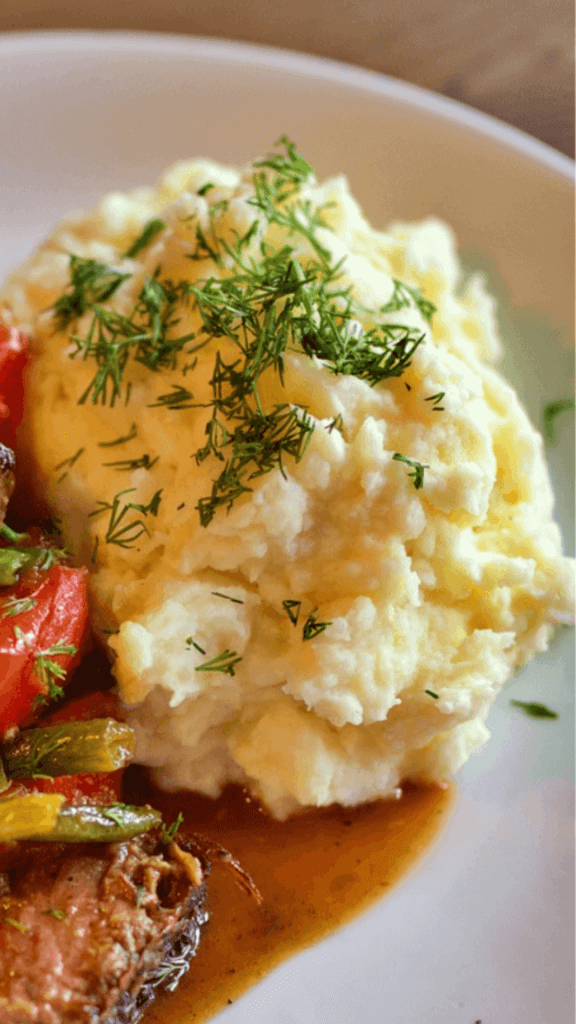
Cauliflower Mash
Cauliflower mash is a low-carb alternative to traditional mashed potatoes. You make it by steaming or boiling cauliflower florets until they’re tender and then mashing them to achieve a creamy consistency. Use it as a healthier option, especially if you wish to reduce your carbohydrate intake while still enjoying a mashed side dish. Here’s how you can use cauliflower mash as a substitute for polenta in your recipes:
- Texture: Cauliflower mash can be prepared to have a similar creamy texture to soft polenta, this makes it a suitable replacement in many dishes.
- Flavor: While cauliflower doesn’t have the corny flavor of polenta, it’s versatile and can be seasoned to complement a wide range of dishes.
- Toppings: Serve cauliflower mash as a base for various toppings just like you would with polenta. It pairs well with sautéed vegetables, meat-based sauces, or even grilled shrimp or chicken.
- Herbed Cauliflower: Add fresh or dried herbs, garlic, and grated cheese to your cauliflower mash for extra flavor. This can make it even more appealing as a side dish or base for other ingredients.
- Cauliflower Polenta Cakes: Similar to polenta cakes, you can spread cauliflower mash on a tray, let it cool and solidify, and then cut it into shapes. Pan-fry or bake for a firmer texture.
- Low-Carb Pizza Crust: If you’re looking for a unique application, you can use cauliflower mash to make a low-carb pizza crust. Mix it with cheese and herbs, shape it into a crust, and bake it before adding your favorite pizza toppings.
- Shepherd’s Pie: Substitute the traditional mashed potato topping in Shepherd’s Pie with cauliflower mash. It’s a lighter and healthier take on this classic dish.
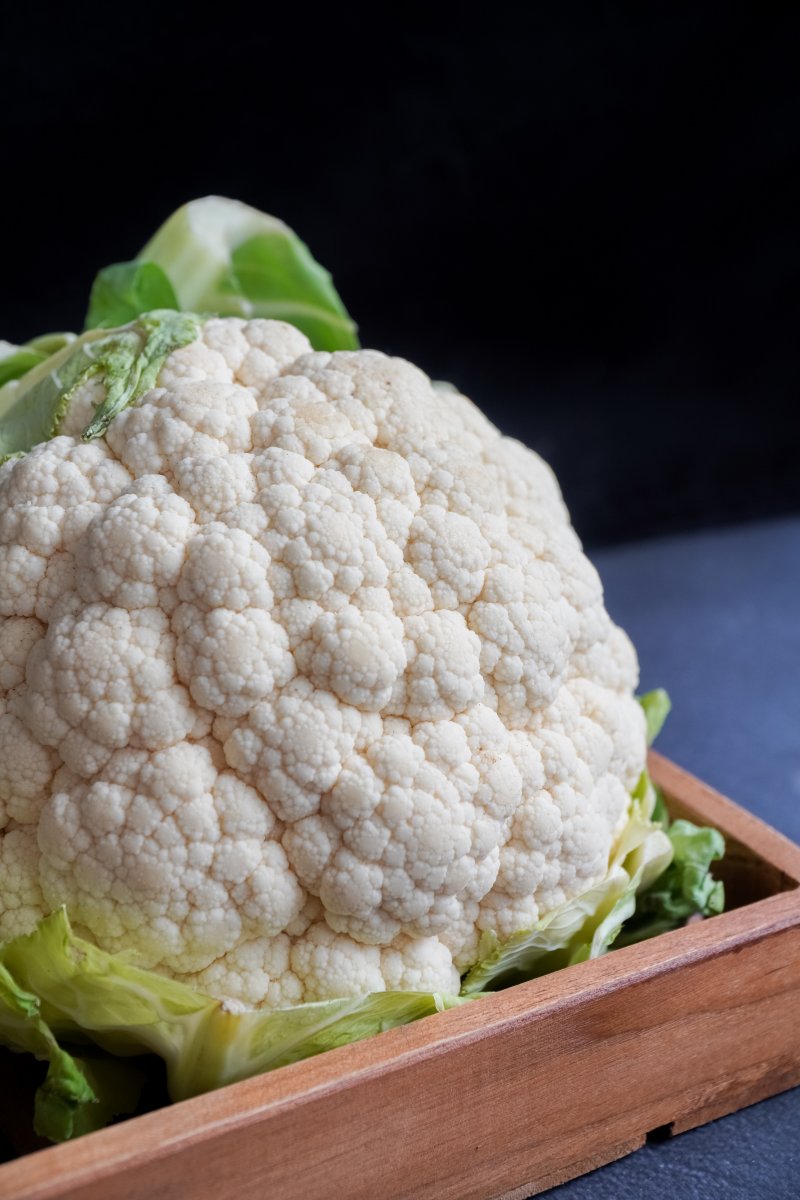
Rice
Using rice as a substitute for polenta can be a delightful and versatile option in various dishes. Here are a few types of rice you can consider:
- Arborio Rice: Arborio rice is a short-grain rice that is commonly used in risotto. It has a high starch content, which, when cooked, results in a creamy and slightly sticky texture. This makes it an excellent choice for creating a polenta-like consistency.
- Carnaroli Rice: Similar to Arborio, Carnaroli rice is another type of short-grain rice suitable for making creamy rice-based dishes.
- Sushi Rice: Sushi rice is a short-grain rice known for its sticky texture when cooked. Use it to create a creamy base that resembles polenta. This option is great if you’re aiming for a neutral taste that can adapt to various flavors.
- Calrose Rice: Calrose rice is a medium-grain rice, often used in Asian cuisine. When cooked, it has a slightly sticky and creamy texture, making it an excellent choice for dishes where you’d use polenta.
- Jasmine Rice: Jasmine rice is a fragrant, long-grain rice that you can use in place of polenta when you’re looking for a lighter, fluffier texture. It has a unique aroma that can add an interesting dimension to your dishes.
- Basmati Rice: Basmati rice is another fragrant, long-grain option that can work well as a substitute for polenta, particularly in dishes with a Middle Eastern or Indian flair. It cooks up light and fluffy.
- Wild Rice: Wild rice isn’t true rice but a type of grass seed. It has a nutty flavor and a chewy texture, that you can use in dishes where you’d like a unique, rustic substitute for polenta.
- Creamy Risotto: Prepare a creamy risotto using any of the above-mentioned rice varieties. Risotto’s creamy consistency and adaptability to various flavors make it a suitable alternative to polenta.
When using rice as a substitute for polenta, the choice of rice type depends on the specific dish and flavor profile you’re aiming for. Each rice variety has its own unique characteristics, so feel free to experiment with them.
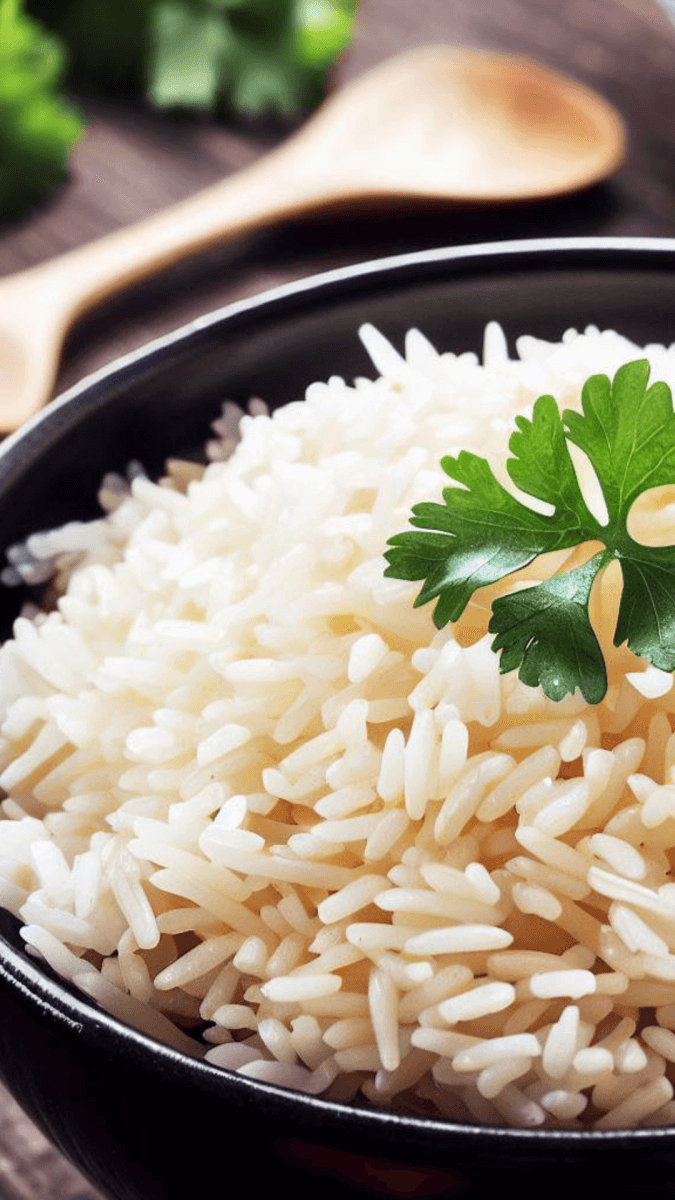
Creamy Buckwheat
Creamy buckwheat is a preparation of buckwheat groats that results in a smooth, porridge-like texture. Buckwheat groats are small, nutrient-rich seeds, and when cooked to a soft consistency, they become creamy and mildly nutty in flavor. Here’s how you can use creamy buckwheat as a substitute for polenta:
- Texture: Creamy buckwheat can be cooked to resemble the soft, creamy texture of polenta, making it a suitable replacement.
- Flavor: While buckwheat has a distinct nutty flavor, it’s versatile and pairs well with various ingredients. You can season it to match the flavors of your dish.
- Toppings: Serve creamy buckwheat as a base for toppings similar to how you would with polenta. It pairs nicely with sautéed vegetables, meat-based sauces, or even grilled seafood.
- Herbed Buckwheat: Enhance the flavor of creamy buckwheat by adding fresh or dried herbs, garlic, and grated cheese. This can make it a more enticing side dish or base for other ingredients.
- Buckwheat Cakes: Just like polenta cakes, you can spread cooked and cooled creamy buckwheat on a tray and cut it into shapes. You can pan-fry or bake the slices for a firmer texture.
- Polenta-Style Dishes: Adapt your polenta recipes to use creamy buckwheat instead. For example, you can create a creamy buckwheat porridge and serve it with a flavorful ragu or as a side dish in place of traditional soft polenta.
- Buckwheat Risotto: Prepare a creamy risotto using creamy buckwheat. Risotto’s rich and creamy consistency can be achieved with buckwheat and offers a unique twist on traditional rice-based risotto.
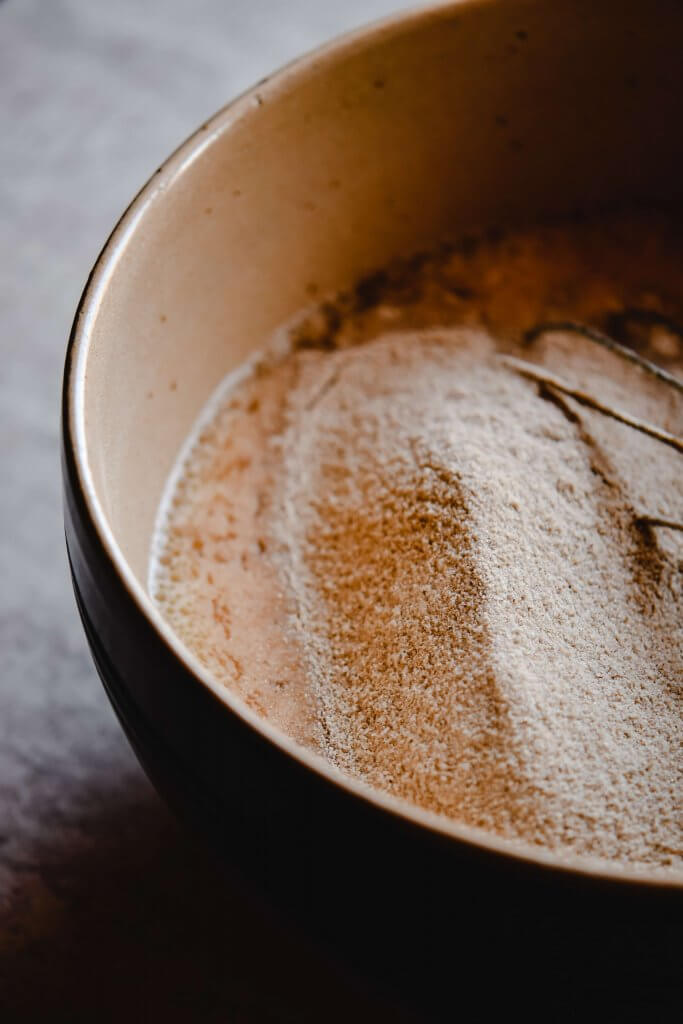
Millet Porridge
Millet porridge is a dish made from millet, which is a small, round grain often considered a staple in various cultures around the world. It has a nutty flavor and slightly chewy texture. You create millet porridge by simmering millet grains in liquid, often water or milk, until they soften and the mixture thickens. Here’s how you can use millet porridge as a substitute for polenta:
- Texture: Cook millet porridge until it has a creamy consistency similar to that of soft polenta. This wi make it a suitable replacement in various dishes.
- Flavor: Millet has a unique, nutty flavor that can add an interesting twist to your dishes. Season to match the flavors of your recipe.
- Toppings: Just like polenta, you can serve millet porridge as a base for toppings. It pairs well with sautéed vegetables, meat-based sauces, or grilled proteins like chicken or fish.
- Herbed Millet: Add fresh or dried herbs, garlic, and grated cheese to your millet porridge for an extra burst of flavor. This can make it a more enticing side dish or base for other ingredients.
- Millet Cakes: Spread cooked and cooled millet porridge on a tray, let it solidify, and then cut it into shapes. These shapes can be pan-fried or baked to create a firmer texture, similar to polenta cakes.
- Polenta-Style Dishes: Adapt your polenta recipes to use millet porridge instead. Create a creamy millet porridge and serve it with a flavorful ragu or as a side dish in place of traditional soft polenta.
- Porridge Bowls: Showcase millet porridge as a standalone dish in savory or sweet porridge bowls. Top it with a variety of ingredients like roasted vegetables, poached eggs, fresh fruits, or nuts to create diverse and visually appealing dishes.
Millet porridge can be an exciting and nutritious alternative to polenta, particularly if you appreciate the unique flavor and versatility of millet.
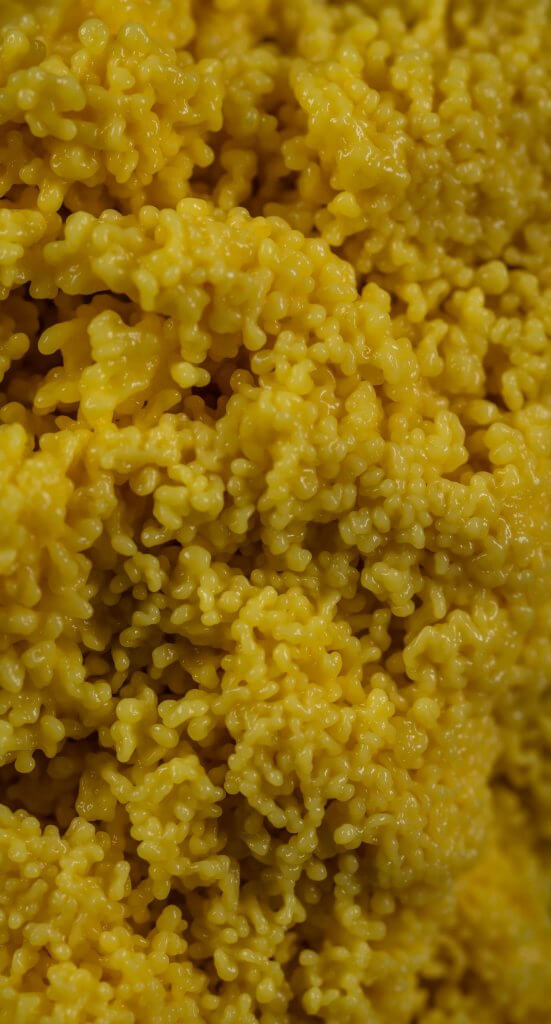
Sweet Mashed Potatoes
Sweet mashed potatoes, also known as sweet potato mash, are a delicious side dish made by cooking and mashing sweet potatoes. They have a naturally sweet flavor and a creamy, smooth texture. While they are typically used as a side dish or in sweet preparations, they can be a unique and flavorful substitute for polenta in certain dishes. Here’s how you can use sweet mashed potatoes as a substitute:
- Texture: Sweet mashed potatoes can be prepared to have a creamy texture similar to that of soft polenta, making them a suitable replacement in various dishes.
- Flavor: Sweet mashed potatoes bring a natural sweetness that can add a unique twist to your recipes. Season or pair with other ingredients to complement the dish.
- Toppings: Serve sweet mashed potatoes as a base for a variety of toppings, much like you would with polenta. They work well with both sweet and savory toppings, such as sautéed vegetables, maple-glazed pecans, or even a savory gravy.
- Sweet and Savory: Experiment with both sweet and savory applications. Use sweet mashed potatoes as a base for dishes like sweet potato gnocchi or sweet potato-based polenta cakes with a savory twist.
- Shepherd’s Pie: Swap the traditional mashed potato topping in Shepherd’s Pie with sweet mashed potatoes. This adds a unique flavor and a hint of sweetness to the dish.
- Sweet Potato Grits: Create a dish similar to cheesy grits but use sweet mashed potatoes for a unique sweet and creamy alternative.
- Sweet Potato Cakes: Like polenta cakes, spread sweet mashed potatoes on a tray, allow them to cool and solidify, and then cut them into shapes. These shapes can be pan-fried or baked for a firmer texture.
- Dessert Dishes: Utilize the natural sweetness of sweet mashed potatoes in dessert recipes, such as sweet potato pie or sweet potato-based pancakes.
Using sweet mashed potatoes as a substitute for polenta can offer your dishes a distinctive flavor profile and a touch of natural sweetness.
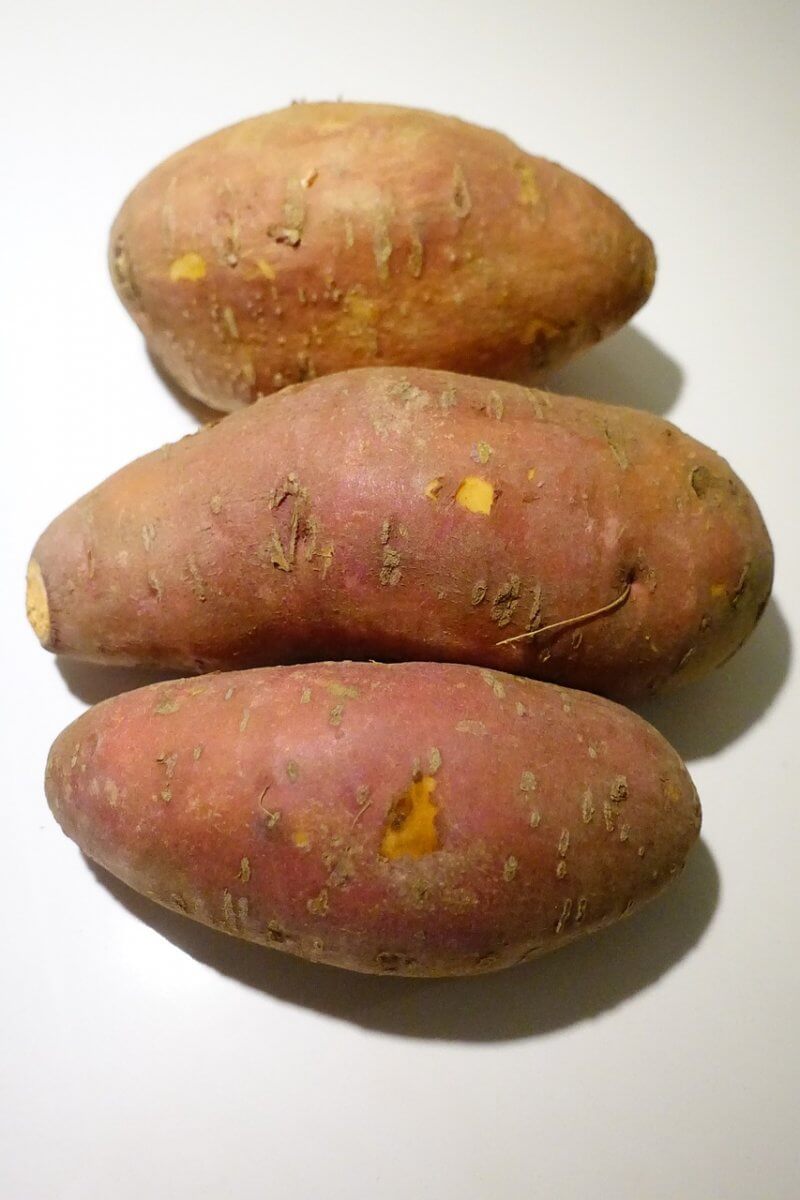
Mashed Pumpkin
Mashed pumpkin, often referred to as pumpkin puree or pumpkin mash, is made by cooking and mashing pumpkin until it reaches a smooth, creamy consistency. It’s commonly used in sweet dishes like pumpkin pie, but it can also serve as a unique and flavorful substitute for polenta in certain recipes. Here’s how you can use mashed pumpkin as a substitute:
- Texture: Mashed pumpkin can be prepared to have a creamy texture similar to that of soft polenta, making it a suitable replacement in various dishes.
- Flavor: Mashed pumpkin has a naturally sweet and slightly nutty flavor, which can add a unique twist to your recipes. It pairs well with a range of ingredients and you can season to match the flavors of your dish.
- Toppings: Serve mashed pumpkin as a base for a variety of toppings, much like you would with polenta. Consider topping it with sautéed mushrooms, roasted vegetables, or even a protein of your choice.
- Savory and Sweet: Experiment with both savory and sweet applications. Use mashed pumpkin as a base for dishes like pumpkin gnocchi, pumpkin polenta cakes, or also as a sweet and savory side.
- Pumpkin Shepherd’s Pie: Substitute the traditional mashed potato topping in Shepherd’s Pie with mashed pumpkin. This adds a unique pumpkin flavor and a hint of sweetness to the dish.
- Pumpkin Cakes: Just like polenta cakes, spread mashed pumpkin on a tray, allow it to cool and solidify, and then cut it into shapes. Pan-fry or bake the shapes for a firmer texture.
- Pumpkin Pancakes: Incorporate mashed pumpkin into your pancake batter for a delightful and slightly sweet breakfast treat.
- Dessert Dishes: Use the natural sweetness of mashed pumpkin in dessert recipes, such as pumpkin pie, pumpkin pudding, or pumpkin-flavored ice cream.
Mashed pumpkin can offer a unique and flavorful alternative to polenta, especially if you appreciate its natural sweetness and versatility.

Creamed Spinach
Creamed spinach is a classic side dish made by sautéing fresh spinach and then combining it with a rich and creamy sauce. Choose ingredients such as heavy cream, butter, and also cheese for added flavor. The result is a luscious, velvety spinach dish that’s rich in flavor and texture. While it’s quite different from polenta, you can use it as a substitute in dishes where you want a creamy base. Here’s how you can use creamed spinach as a substitute for polenta:
- Texture: Creamed spinach is creamy and rich, making it a suitable replacement when you need a creamy consistency like that of soft polenta.
- Flavor: It has a distinct creamy and slightly cheesy taste that can add a unique element to your recipes. You can season it to complement the dish’s flavors.
- Toppings: Serve creamed spinach as a base for various toppings, just as you would with polenta. It pairs well with sautéed mushrooms, grilled chicken, or a flavorful tomato sauce.
- Savory Dishes: Use creamed spinach as a creamy side dish alongside your main course. It’s a great complement to roasted meats, fish, or even a vegetarian entree.
- Creamed Spinach Cakes: Similar to polenta cakes, you can spread creamed spinach on a tray and allow it to cool. Once it has firmed up you can then cut it into shapes. Pan-fry or bake the shapes until they adopt a firmer texture.
- Creamed Spinach Risotto: Adapt your polenta-based risotto recipes to use creamed spinach as the creamy base. It offers a rich and unique twist to traditional risotto.
- Stuffed Vegetables: Use creamed spinach as a filling for vegetables like bell peppers, tomatoes, or zucchinis. It provides a creamy and flavorful interior.
While creamed spinach is quite different from polenta, it can work as a substitute in specific dishes where you need a creamy base.
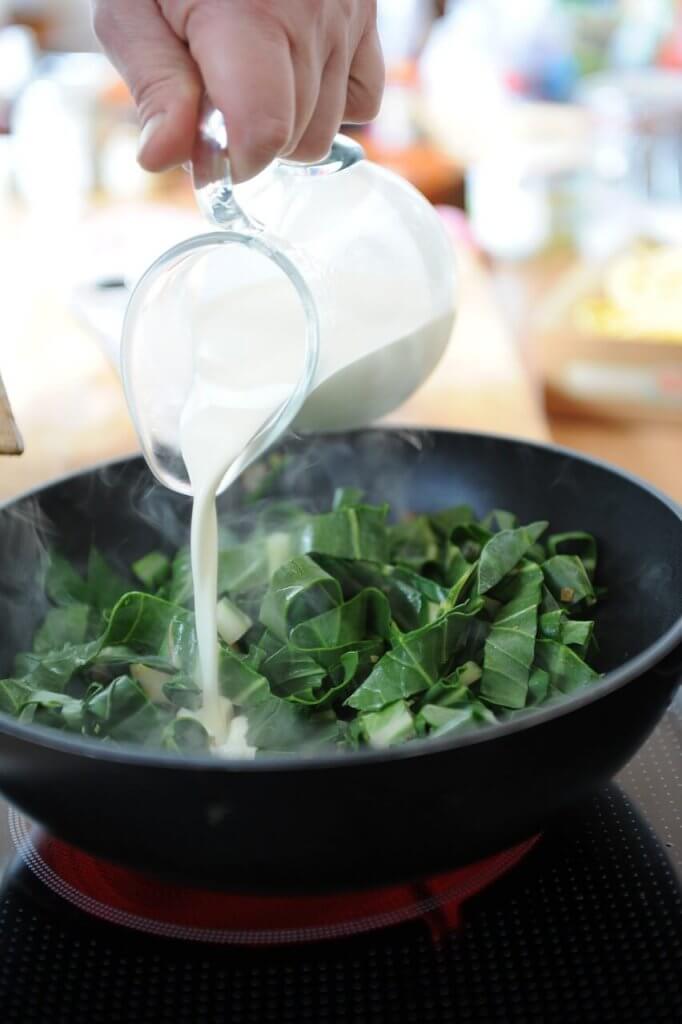
Summary for Polenta substitutes
Okay – that’s you all sorted with suitable substitutes for Polenta.
Is there something on the list that you would like to try? Here’s a quick recap:
- Cornmeal: Use cornmeal as the closest substitute for polenta, with a similar texture and flavor.
- Mashed Potatoes: Creamy mashed potatoes can serve as a neutral-textured alternative to soft polenta.
- Cauliflower Mash: For a low-carb option, try cauliflower mash with a creamy consistency.
- Rice (Arborio, Sushi, Calrose): Different rice types, like Arborio, Sushi, or Calrose, can provide a creamy base similar to polenta.
- Creamy Buckwheat: Creamy buckwheat can mimic the texture of soft polenta with a nutty flavor.
- Millet Porridge: Millet porridge can be used as a creamy, grainy substitute for polenta.
- Sweet Mashed Potatoes: Sweet mashed potatoes offer a naturally sweet, creamy alternative.
- Mashed Pumpkin: Mashed pumpkin provides a sweet and flavorful substitute with a smooth texture.
- Creamed Spinach: Creamed spinach offers a creamy, rich base for dishes requiring a creamy consistency.
Each of these substitutes has its unique texture and flavor, and they can be adapted to a variety of recipes depending on the desired outcome.
We have gathered together a lot more facts on ingredients such as herbs, spices, oils, nuts, etc. if you would like to learn some more.
Or if you need to swap out another ingredient have a look at our Substitutes section.

